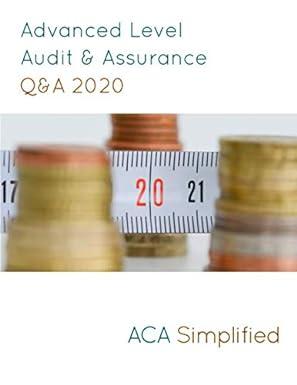



Required information [The following information applies to the questions displayed below The transactions listed below are typical of those involving Amalgamated Textiles and American Fashions. Amalgamated is a wholesale merchandiser and American Fashions is a retail merchandiser. Assume all sales of merchandise from Amalgamated to American Fashions are made with terms n/60, and the two companies use perpetual inventory systems. Assume the following transactions between the two companies occurred in the order listed during the year ended December 31. a. Amalgamated sold merchandise to American Fashions at a selling price of $265,000. The merchandise had cost Amalgamated $189,000 b. Two days later, American Fashions returned goods that had been sold to the company at a price of $26,500 and complained to Amalgamated that some of the remaining merchandise differed from what American Fashions had ordered. Amalgamated agreed to give an allowance of $8,500 to American Fashions. The goods returned by American Fashions had cost Amalgamated $18,770 Just three days later, American Fashions paid Amalgamated, which settled all amounts owed. Required 1. Indicate the amount and direction of the effect (+ for increase,-for decrease, and NE for no effect) of each transaction on the Inventory balance of American Fashions. (Enter all amounts as positive values.) Effect on Transaction Inventory Balanc 7600 b. C. The transactions listed below are typical of those involving Amalgamated Textiles and American Fashions. Amalgamated is a wholesale merchandiser and American Fashions is a retail merchandiser. Assume all sales of merchandise from Amalgamated to American Fashions are made with terms n/60, and the two companies use perpetual inventory systems Assume the following transactions between the two companies occurred in the order listed during the year ended December 31 a. Amalgamated sold merchandise to American Fashions at a selling price of $265,000. The merchandise had cost Amalgamated $189,000 b. Two days later, American Fashions returned goods that had been sold to the company at a price of $26,500 and complained to Amalgamated that some of the remaining merchandise differed from what American Fashions had ordered. Amalgamated agreed to give an allowance of $8,500 to American Fashions. The goods returned by American Fashions had cost Amalgamated $18,770 c. Just three days later, American Fashions paid Amalgamated, which settled all amounts owed 2. Prepare the journal entries American Fashions would record. TIP: The selling price charged by the seller is the purchaser's cost. (If no entry is required for a transaction/event, select "No Journal Entry Required" in the first account field.) View transaction list Journal entry worksheet 2 Record the inventory purchased of $265,000 on account. Note: Enter debits before credits Transaction General Journal Debit Credit The transactions listed below are typical of those involving Amalgamated Textiles and American Fashions. Amalgamated is a wholesale merchandiser and American Fashions is a retail merchandiser. Assume all sales of merchandise from Amalgamated to American Fashions are made with terms n/60, and the two companies use perpetual inventory systems Assume the following transactions between the two companies occurred in the order listed during the year ended December 31 a. Amalgamated sold merchandise to American Fashions at a selling price of $265,000. The merchandise had cost Amalgamated $189,000. b. Two days later, American Fashions returned goods that had been sold to the company at a price of $26,500 and complained to Amalgamated that some of the remaining merchandise differed from what American Fashions had ordered. Amalgamated agreed to give an allowance of $8,500 to American Fashions. The goods returned by Americarn Fashions had cost Amalgamated $18,770. c Just three days later, American Fashions paid Amalgamated, which settled all amounts owed 2. Prepare the journal entries American Fashions would record. TIP: The selling price charged by the seller is the purchaser's cost. (If no entry is required for a transaction/event, select "No Journal Entry Required" in the first account field.) View transaction list Journal entry worksheet 2 Record the return of unsatisfactory merchandise for which credit was given Note: Enter debits before credits. Transaction General Journal Debit Credit The transactions listed below are typical of those involving Amalgamated Textiles and American Fashions. Amalgamated is a wholesale merchandiser and American Fashions is a retail merchandiser. Assume all sales of merchandise from Amalgamated to American Fashions are made with terms n/60, and the two companies use perpetual inventory systems Assume the following transactions between the two companies occurred in the order listed during the year ended December 31 a. Amalgamated sold merchandise to American Fashions at a selling price of $265,000. The merchandise had cost Amalgamated $189,000. b. Two days later, American Fashions returned goods that had been sold to the company at a price of $26,500 and complained to Amalgamated that some of the remaining merchandise differed from what American Fashions had ordered. Amalgamated agreed to give an allowance of $8,500 to American Fashions. The goods returned by American Fashions had cost Amalgamated $18,770. c. Just three days later, American Fashions paid Amalgamated, which settled all amounts owed 2. Prepare the journal entries American Fashions would record. TIP: The selling price charged by the seller is the purchaser's cost. (If no entry is required for a transaction/event, select "No Journal Entry Required" in the first account field.) View transaction list Journal entry worksheet Record the payment for the inventory purchase in full. Note: Enter debits before credits. Transaction General Journal Debit Credit C










